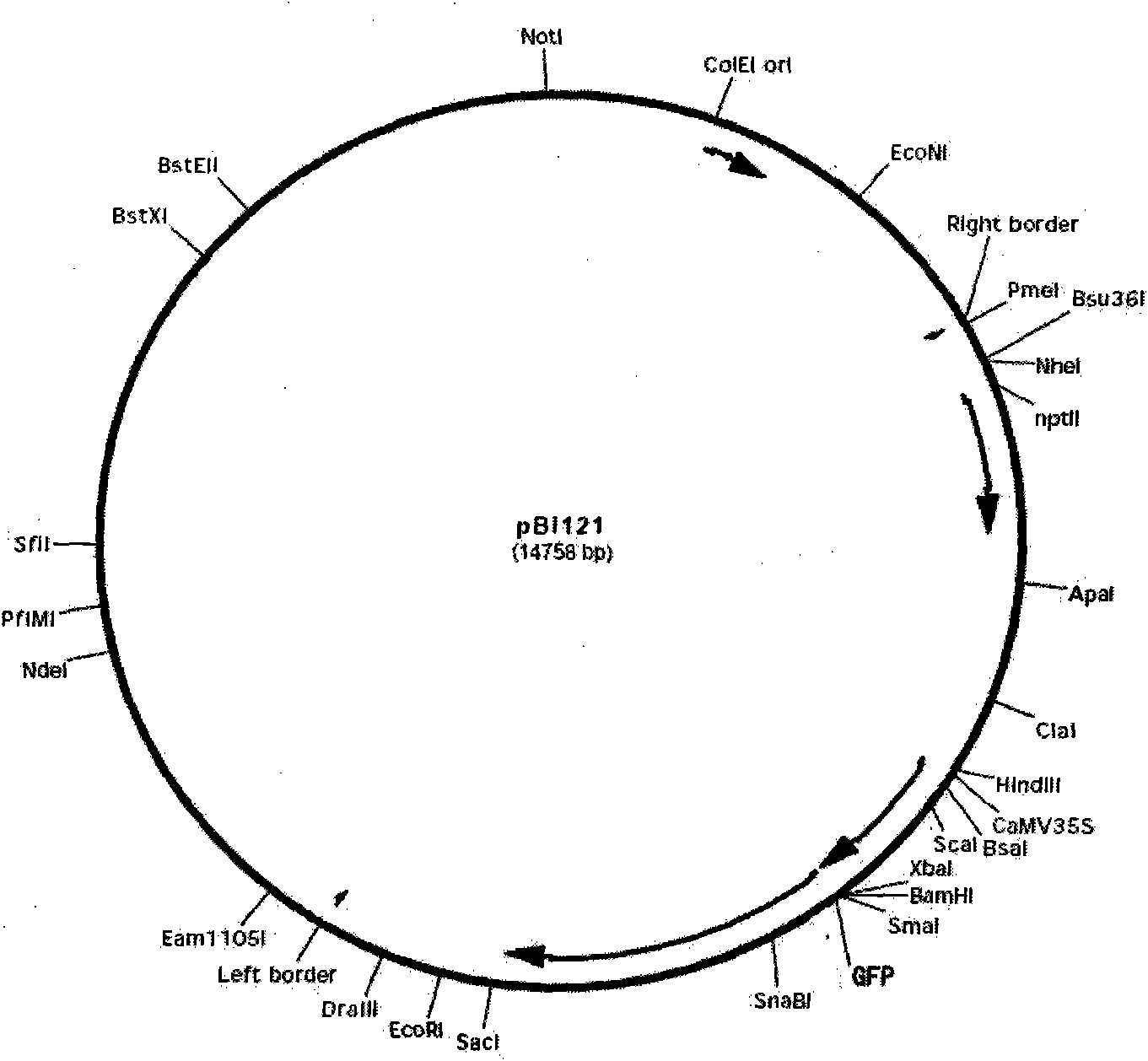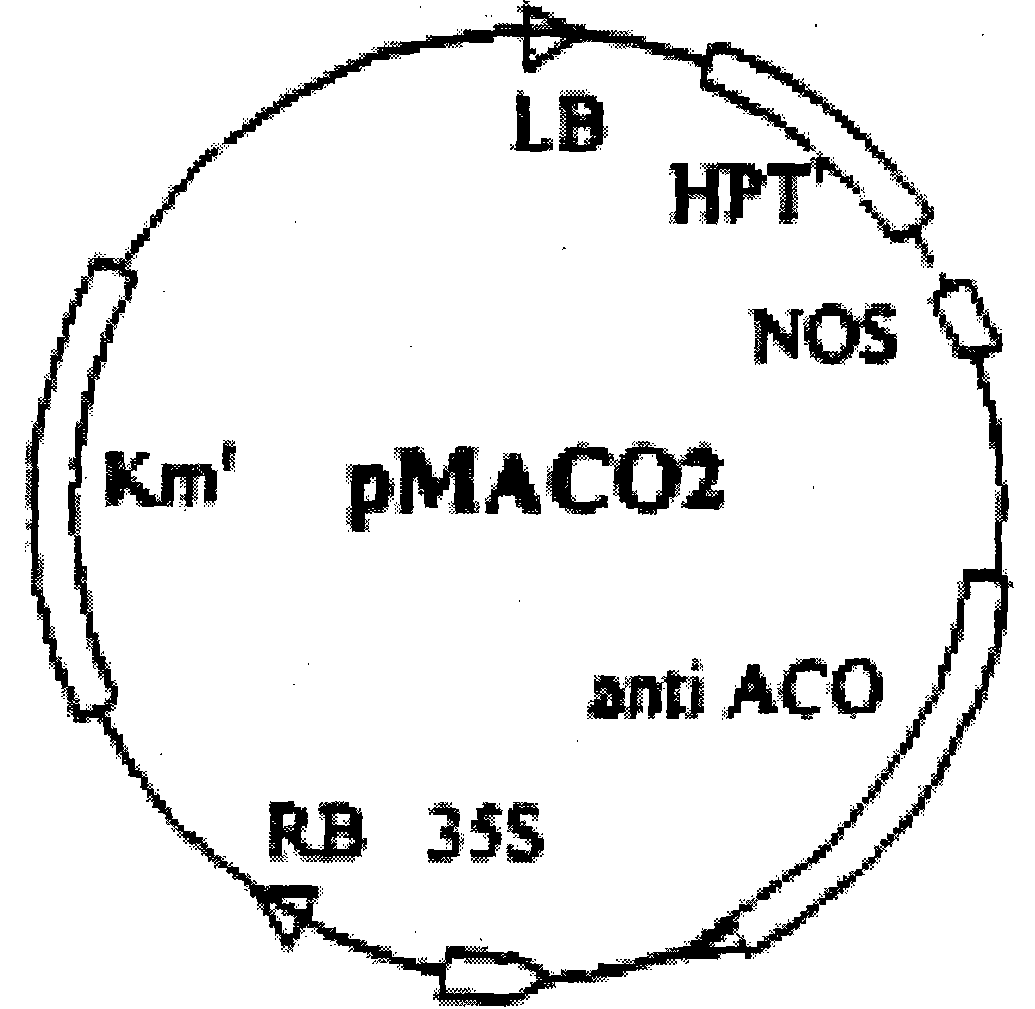Method for culturing transgenic dianthus through agrobacterium-mediated embryogenic callus transformation
A technology of embryogenic callus and Agrobacterium, applied in the field of ornamental plant tissue culture and genetic transformation, to achieve high transformation efficiency, easy seedling growth, and abundant planting resources
- Summary
- Abstract
- Description
- Claims
- Application Information
AI Technical Summary
Problems solved by technology
Method used
Image
Examples
Embodiment 1
[0046] Induction and subculture of embodiment 1 dianthus embryogenic callus
[0047] 1) Material collection and low-temperature treatment. At around 9:00 a.m. on a sunny and dry day, collect dianthus flower buds growing in the field with a length of 7.0-8.5 cm, put them in a petri dish lined with moist filter paper, and place them in a 4°C refrigerator Refrigerate for 4-6d.
[0048] 2) Disinfection and inoculation of materials. The flower buds in step 1) are first washed with washing powder water, then rinsed under tap water for about 1 hour, and then disinfected on an ultra-clean workbench. The process is as follows: First, soak the flower buds in a 70% ethanol triangular flask for 1 minute, wash them with sterile water twice; then sterilize them with 0.1% mercuric chloride for 10-12 minutes. To make the flower buds fully contact with the mercuric chloride solution; then rinse with sterile water for 3-5 times, take out the sterilized flower buds and place them on sterile fil...
Embodiment 2
[0051] Example 2 Transformation of GUS reporter gene into embryogenic callus of Dianthus chinensis by Agrobacterium-mediated method
[0052] The dianthus embryogenic callus obtained in Example 1 was used as a marker of the GUS reporter gene for transformation experiments. Specific steps are as follows:
[0053] 1) Under the aseptic environment of the ultra-clean workbench, take the dianthus embryogenic callus of embodiment 1 on the sterilized filter paper, crush it with tweezers, and disperse it; pick which is bright yellow, with compact tissue, Granular embryogenic callus was used as material for transformation.
[0054] 2) Inoculate the embryogenic callus obtained in step 1) in the pre-culture medium on the ultra-clean workbench, and perform pre-culture before infection. The culture conditions are: temperature 25 ± 1 ° C, relative humidity 50% ~ 60 %, the light intensity is 2000-3000lux, and the light / darkness is 16h / 8h. The embryogenic callus of precultivation treatment ...
Embodiment 3
[0082] Example 3 Transformation of antisense ACO gene into embryogenic callus of Dianthus using Agrobacterium-mediated method
[0083] The embryogenic callus obtained in Example 1 was subjected to the transformation experiment of the antisense ACO gene (the accession number is gi|520801|, see SEQ ID NO: 3 in the sequence listing). The steps are as follows:
[0084] 1) Under the aseptic environment of the ultra-clean workbench, take the embryogenic callus of Example 1 on sterilized filter paper, crush it with tweezers, and disperse it; Strong embryogenic callus was used as the material for transformation.
[0085] 2) Hygromycin (Hyg) sensitivity screening for embryogenic callus: the embryogenic calli from step 1) were inoculated in 6 pre-designed MS media respectively. These 6 kinds of media all use MS as the basic medium (ie MS), add 6-BA1.0mg / L; NAA0.1mg / L; sucrose 30g / L; agar 7.0g / L, pH5.8. When carrying out the concentration gradient screening test of antibiotics, add Hy...
PUM
| Property | Measurement | Unit |
|---|---|---|
| length | aaaaa | aaaaa |
Abstract
Description
Claims
Application Information
 Login to View More
Login to View More - R&D
- Intellectual Property
- Life Sciences
- Materials
- Tech Scout
- Unparalleled Data Quality
- Higher Quality Content
- 60% Fewer Hallucinations
Browse by: Latest US Patents, China's latest patents, Technical Efficacy Thesaurus, Application Domain, Technology Topic, Popular Technical Reports.
© 2025 PatSnap. All rights reserved.Legal|Privacy policy|Modern Slavery Act Transparency Statement|Sitemap|About US| Contact US: help@patsnap.com



